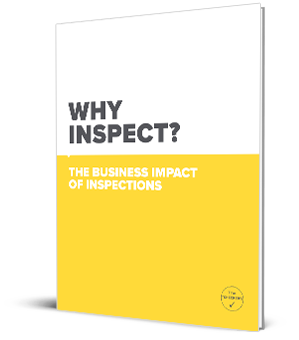In industries ranging from manufacturing to construction, the use of hazardous substances is a necessary aspect of operations. However, if not managed carefully, these substances can pose significant health and safety risks to workers. The goal of effective management is to minimize worker exposure to hazardous substances, and this is where highly configurable software solutions like The Checker can play a crucial role. Let’s explore the importance of managing hazardous substances, what constitutes a hazardous substance, and how inspections can help reduce the associated risks.
The Importance of Managing Hazardous Substances
Hazardous substances are integral to many primary industries and construction activities. However, their improper handling and control can result in serious health and safety consequences for workers. The goal of managing hazardous substances is to ensure that workers are not exposed to these substances in ways that could harm their well-being.
What Constitutes a Hazardous Substance?
A hazardous substance is characterized by specific properties that can lead to harm or damage. These properties include:
Explosive: Substances that can explode or cause explosions.
Flammable: Substances that ignite easily and burn rapidly.
Oxidizing: Substances that can cause or intensify fires and explosions.
Toxic: Substances that can harm people if they enter the body through contact, ingestion, or inhalation. The effects can range from mild to life-threatening and immediate to long-term.
Corrosive: Substances that can cause skin burns and eye damage.
Ecotoxic: Substances that are toxic to the environment.
Use Cases for Hazardous Substance Management
Renovation / Remediation
In scenarios like renovation or remediation, the presence of hazardous substances like asbestos, mold, or lead in building materials poses risks. Highly configurable software tools can help facilitate regular inspections, testing, and maintenance of ventilation systems designed to reduce the concentration of airborne hazardous substances. This proactive approach ensures that workers and occupants are protected from potential health hazards.
Industrial and Laboratory Settings
Industries and laboratories often deal with various hazardous substances. It's crucial to keep a comprehensive record of all hazardous substances present in these workplaces. This includes tracking whether relevant regulations, standards, and safety practices are being met. Having a centralized system for this information ensures that proper safety management systems are in place and functioning as intended.
The Role of Inspections in Risk Reduction
Inspections are an indispensable component of managing hazardous substances. Regular inspections provide a mechanism to:
- Identify Risks: Inspections help identify potential risks associated with hazardous substances and their handling.
- Ensure Compliance: Inspections ensure compliance with relevant regulations, standards, and safety practices.
- Maintain Documentation: A well-documented inspection process ensures that safety documentation remains valid and up-to-date.
- Preventive Maintenance: Regular inspections enable the identification of maintenance needs in ventilation systems and other safety measures.
- Data-Driven Decisions: Inspection data can be analyzed to make data-driven decisions that further enhance safety protocols.
Software Solutions like The Checker
Highly configurable software solutions like The Checker can revolutionize the management of hazardous substances. With features tailored to specific industries, such tools streamline the inspection process and enable accurate documentation. The software provides a structured framework for inspections, ensuring that all aspects of risk management are covered comprehensively.
Conclusion
Effectively managing hazardous substances is a non-negotiable responsibility for industries dealing with potentially harmful materials. Through regular inspections and the aid of specialized software like The Checker, organizations can significantly reduce the risks associated with these substances. By tracking compliance, maintaining accurate records, and implementing preventive measures, the potential health and safety hazards posed by hazardous substances can be minimized, creating safer and more productive work environments for all.











